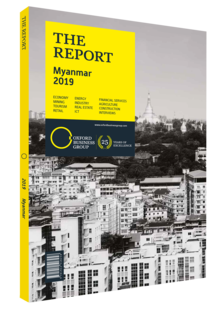Myanmar Universal Service Fund supports mobile signal coverage growth
Since the liberalisation of the telecommunications industry, the Myanmar government has made a point of tailoring its digital strategy to achieve its goals on economic inclusion. With this in mind, the Telecommunications Law of 2013 gave the Ministry of Transport and Communications (MoTC) the ability to establish a Universal Service Fund (USF) with the ultimate goal of ensuring universal mobile coverage.
In early 2018 the government of Myanmar revealed plans to impose a 2% tax on the income of mobile operators through the establishment of a USF. As part of the government’s overall Universal Service Strategy (USS), the proceeds from the fund will be used to provide basic telecoms services in rural areas that remain underserved due to logistical challenges and communal unrest, such as in Shan, Kayin, Kachin and Rakhine States.
The government has set a target of 94.8% population coverage by the first quarter of 2019, to build on the 90% covered in early 2018, according to the USS issued by the Posts and Telecommunications Department with the assistance of emerging markets ICT consultancy firm Intelecon.
The Scheme
In broad terms, the USF will be responsible for the implementation of the USS, along with its programmes and projects. In doing so, the USF will help to fund the deployment of basic infrastructure in unconnected rural areas, with the intention of introducing more advanced telecommunications services in the future.
Starting in June 2018, Myanmar’s four mobile operators – the state-owned MPT, Telenor Myanmar, Ooredoo Myanmar and Mytel – have been required to make financial contributions to USF. Over the initial five-year period, it is estimated that the scheme will collect between $100m to $121m from operator levies. Estimates also indicate that the fund required for the main expenditure programme will be collected within the first two years of the USF.
The USF infrastructure programme will bring improved communication technologies to communities of a range of ethnic backgrounds as well as support the implementation of special projects and initiatives, such as the provision of tools to enhance the use of communication services for people with disabilities. In the first year of the USF, the aim is to use infrastructure projects to cover an additional 1% of the population, specifically those living in Kachin, Chin, Sagaing and Tanintharyi. The approximate subsidy per underserved inhabitant will be around $24. In the second year, infrastructure projects will target the least covered townships in Kachin, Kayin, Kayah and Shan, with an approximate subsidy per inhabitant of $17.04. Looking further ahead, the target increase in population coverage is 0.9% in 2020, with an approximate subsidy cost of $9.30; 0.4% in 2021, at $16.30; and 0.3% in 2022, at $7.02. The final townships to be covered by the scheme are to be in Rakhine and East Bago.
According to government officials, USF will use a two-stage competitive tendering approach to select bidders. Under this requirement, only the qualified bidders will have their financial proposals considered. Thereafter, the bidder with the lowest proposed subsidy will be awarded the project.
While the USF aims to reach 99% of the population by 2022, ethnic and communal problems have delayed network deployment. As of the fourth quarter of 2018, more than half of the uncovered population – around 1.8m people – lived in areas challenged by these disputes.
With over 90 USFs employed worldwide, Myanmar’s digital strategy is to build on the experience of such funds across the globe. Myanmar’s USF is set to serve as an important financial instrument that will advance connectivity in line with the government’s target, promote economic inclusion and fund digital literacy projects with a range of target groups.
You have reached the limit of premium articles you can view for free.
Choose from the options below to purchase print or digital editions of our Reports. You can also purchase a website subscription giving you unlimited access to all of our Reports online for 12 months.
If you have already purchased this Report or have a website subscription, please login to continue.

